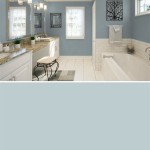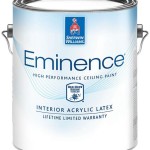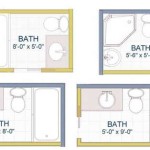Bathroom Tile Cover Up Stickers: A Comprehensive Guide
Bathroom renovations can be costly and time-consuming. For individuals seeking a budget-friendly and less disruptive method of updating the aesthetic of their bathroom, tile cover-up stickers offer a viable alternative. These stickers, also known as tile decals or tile stickers, provide a temporary or semi-permanent solution for concealing outdated or damaged tiles without the need for complete tile removal and replacement.
This article provides a comprehensive overview of bathroom tile cover-up stickers, exploring their benefits, limitations, application process, maintenance requirements, and factors to consider when selecting the appropriate stickers for a specific bathroom project. The information presented aims to equip individuals with the knowledge necessary to make informed decisions regarding the use of tile cover-up stickers as a practical and cost-effective bathroom renovation solution.
Understanding the Benefits of Tile Cover-Up Stickers
Tile cover-up stickers offer several advantages, primarily related to cost, installation ease, and design flexibility. These benefits make them an appealing option for renters, homeowners on a budget, and individuals seeking a quick and easy bathroom refresh.
Cost-Effectiveness: Compared to traditional tile replacement, tile cover-up stickers represent a significantly lower financial investment. The cost of purchasing stickers is considerably less than the combined expenses of new tiles, grout, adhesive, and professional installation fees. This price difference makes tile cover-up stickers an accessible option for individuals with limited budgets.
Ease of Installation: The application of tile cover-up stickers is a relatively simple process that does not require specialized tools or extensive DIY experience. Most stickers feature a self-adhesive backing, allowing for easy peel-and-stick installation. This eliminates the need for hiring professional contractors, further reducing renovation costs and project timelines.
Design Flexibility: Tile cover-up stickers are available in a wide variety of colors, patterns, and designs, offering a vast array of aesthetic options. This allows individuals to personalize their bathrooms and create a desired look without the limitations imposed by existing tile styles. Stickers can mimic the appearance of various tile materials, such as ceramic, porcelain, or even natural stone, providing design versatility without the cost of using these materials directly.
Removability: Many tile cover-up stickers are designed to be removable, making them an ideal solution for renters or individuals who prefer temporary design changes. This removability allows for easy updates and adjustments to the bathroom's aesthetic without permanently altering the existing tile surfaces. The ease of removal also simplifies the process of reverting the bathroom to its original state, if desired.
Concealing Imperfections: Tile cover-up stickers effectively conceal imperfections such as cracks, chips, stains, and outdated designs. This allows individuals to address cosmetic issues without undertaking extensive and costly tile repairs or replacements. The stickers provide a clean and uniform appearance, improving the overall aesthetic of the bathroom.
Examining the Limitations of Tile Cover-Up Stickers
While tile cover-up stickers offer numerous benefits, it is crucial to acknowledge their limitations. These limitations relate to durability, suitability for certain tile types, and the potential for moisture damage.
Durability Concerns: Tile cover-up stickers are generally less durable than traditional tiles and may be susceptible to scratches, tears, and fading over time. The longevity of the stickers depends on factors such as the quality of the adhesive, the material of the sticker, and the level of exposure to moisture and heat. In high-traffic areas or areas prone to frequent water exposure, the stickers may require more frequent replacement.
Suitability for Tile Types: The effectiveness of tile cover-up stickers can vary depending on the texture and condition of the existing tiles. Stickers may not adhere properly to highly textured or uneven tile surfaces. Additionally, if the existing tiles are significantly damaged or have loose grout, the stickers may not provide a smooth and uniform appearance. It is essential to assess the condition of the existing tiles before applying stickers to ensure proper adhesion and a satisfactory aesthetic result.
Moisture Resistance: While many tile cover-up stickers are advertised as water-resistant, they are generally not waterproof. Prolonged exposure to moisture can cause the adhesive to weaken, leading to peeling or bubbling. In areas with high humidity or frequent water exposure, such as shower walls or floors, it is important to select stickers specifically designed for wet environments and to ensure proper ventilation to minimize moisture buildup.
Grout Line Visibility: Depending on the design of the stickers and the width of the grout lines, the underlying grout lines may still be visible. This can detract from the overall aesthetic, particularly if the grout lines are discolored or uneven. To minimize grout line visibility, it is advisable to choose stickers with designs that incorporate patterns or textures that effectively camouflage the grout lines. Additionally, cleaning and sealing the grout lines before applying the stickers can help to improve their appearance.
Not a Permanent Solution: Tile cover-up stickers are not intended to be a permanent solution for bathroom renovations. They are best suited for temporary or semi-permanent updates. Over time, the adhesive may degrade, and the stickers may require replacement. For individuals seeking a long-term solution, traditional tile replacement remains the preferred option.
Navigating the Selection and Application Process
Selecting and applying tile cover-up stickers requires careful consideration to ensure a successful and aesthetically pleasing outcome. Factors such as sticker material, adhesive properties, and the application technique play a crucial role in the final result.
Material Selection: Tile cover-up stickers are typically made from vinyl, PVC, or other synthetic materials. Vinyl stickers are a popular choice due to their durability, water resistance, and ease of cleaning. PVC stickers are generally more rigid and offer greater resistance to scratches and tears. When selecting a material, it is important to consider the expected level of wear and tear and the specific environmental conditions of the bathroom.
Adhesive Properties: The adhesive is a critical factor in the performance of tile cover-up stickers. A strong and durable adhesive is essential to ensure that the stickers adhere properly to the tile surface and remain in place over time. Look for stickers with a high-quality adhesive specifically designed for use in wet environments. It is also advisable to choose stickers with a removable adhesive, which allows for easy removal without damaging the underlying tiles.
Preparation is Key: Before applying tile cover-up stickers, it is essential to thoroughly clean the existing tiles. Remove any dirt, grease, or soap scum using a mild detergent and water. Rinse the tiles thoroughly and allow them to dry completely. If the grout lines are dirty or discolored, clean them with a grout cleaner and allow them to dry before proceeding.
Application Technique: Carefully peel the sticker from its backing and align it with the tile surface. Starting from one edge, gently press the sticker onto the tile, smoothing out any air bubbles as you go. Use a soft cloth or squeegee to ensure even adhesion and to remove any remaining air pockets. Repeat this process for each tile, ensuring that the stickers are properly aligned and that there are no gaps or overlaps.
Sealing for Protection: To enhance the durability and water resistance of the tile cover-up stickers, consider applying a clear sealant over the surface. This will provide an additional layer of protection against moisture and wear and tear. Choose a sealant specifically designed for use on vinyl or PVC materials. Follow the manufacturer's instructions for application and drying time.
Proper Maintenance: To prolong the lifespan of the tile cover-up stickers, it is important to clean them regularly with a mild detergent and water. Avoid using harsh chemicals or abrasive cleaners, as these can damage the stickers. Wipe up any spills or splatters immediately to prevent staining. Regularly inspect the stickers for any signs of peeling or damage and replace them as needed.
By carefully considering these factors, individuals can successfully select and apply tile cover-up stickers to achieve a cost-effective and aesthetically pleasing bathroom renovation.

Tile Stickers Waterproof Removable Backsplash Bathroom Floor Vinyl Bmix6

Tile Stickers Bathroom Update The Honeycomb Home

Tile Sticker For Kitchen Bath Floor Wall Waterproof Removable L N Stick W006q Gray

How To Make Your Floors Last Longer By Sealing In Tile Stickers

Tile Stickers Vinyl Decal Waterproof Removable For Kitchen Bath Wall Floor Or Stair W010g Gray

Everything You Need To Know About Tile Stickers

Porto L And Stick Tile Stickers For Kitchen Bathroom Backsplash Floor Stair Water Resistant Removable Decals Diy Vinyl Er Home Décor

Tile Stickers Vinyl Decal Waterproof Removable For Kitchen Bath Wall Floor Or Stair W010g Gray

Tile Stickers Waterproof Removable Backsplash Bathroom Floor Vinyl Bmix6

Elegant Moroccan Tile Decal Vinyl Stickers Pack
See Also







